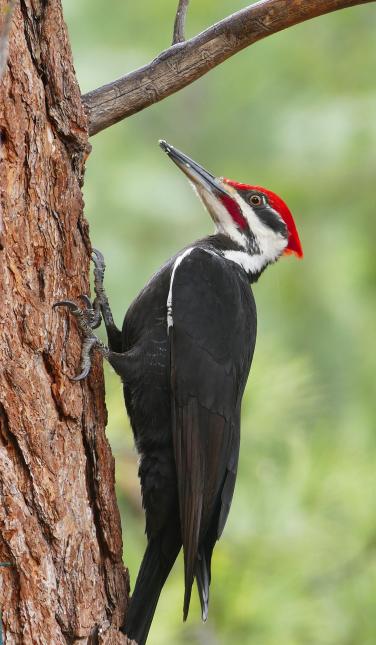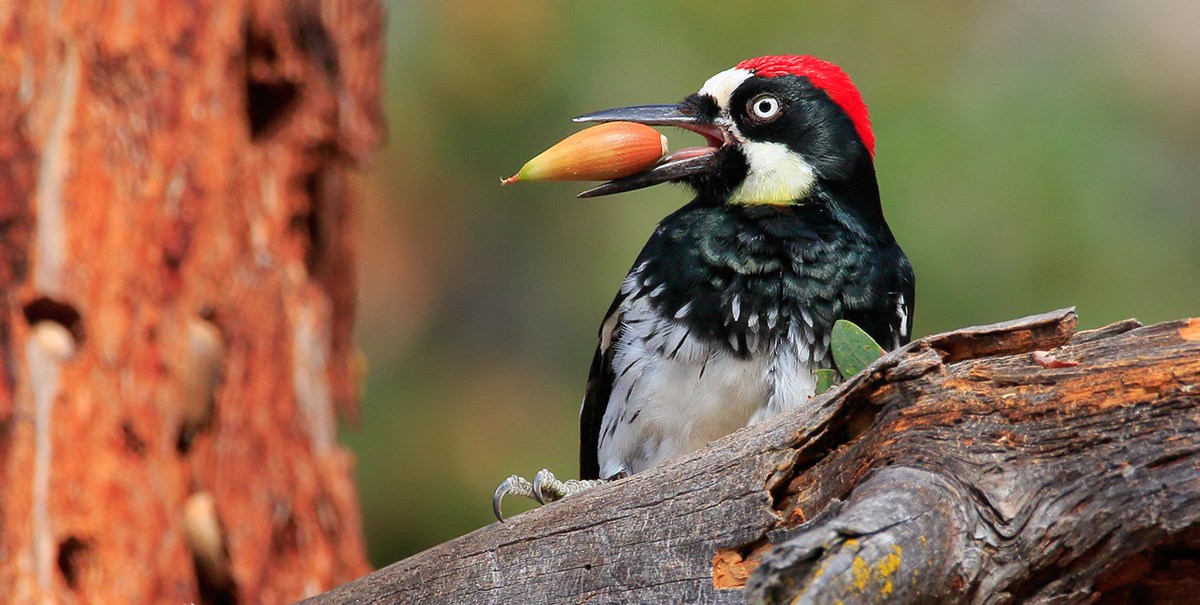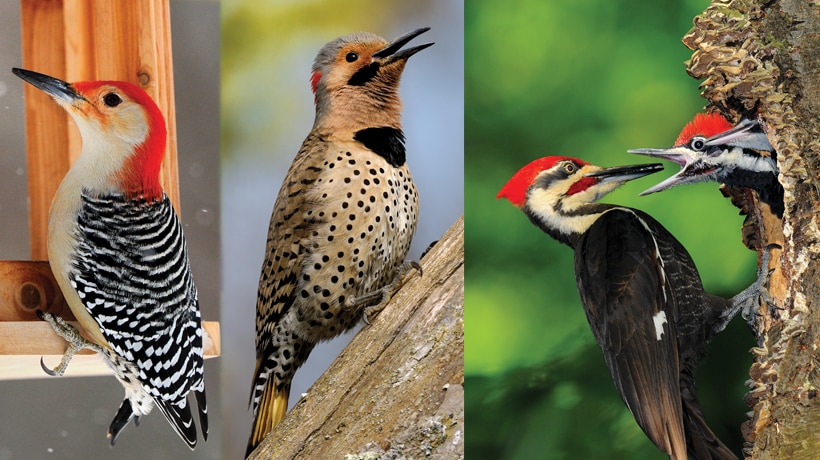Woodpeckers in Florida: Natural History, Ecology, and Conservation
Woodpeckers in Florida: Natural History, Ecology, and Conservation
Blog Article
Woodpeckers: A Comprehensive Guide to Understanding These Distinct Birds
Woodpeckers, with their unique behaviors and physical qualities, have actually long astounded the inquisitiveness of ornithologists and nature lovers alike. From their rhythmic drumming echoing through the woods to their remarkable adjustments for scaling tree trunks effortlessly, these birds offer a remarkable research in avian biology. What really sets woodpeckers apart is not simply their striking appearance but additionally their crucial role in keeping the delicate balance of ecological communities. As we check out the intricate makeup, diverse species, and environmental importance of woodpeckers, a much deeper recognition for these unique birds and the enigmas they hold unfolds.

Woodpeckers' Drumming Actions
Woodpeckers exhibit a balanced and specific drumming habits that offers different necessary functions in their every day lives. This habits is mostly connected with communication, territory defense, and foraging. The distinct drumming audio is produced by the fast pecking of their beaks against hard surfaces such as tree trunks, branches, or perhaps metal items.
Interaction is a vital aspect of woodpecker behavior, and drumming plays a significant duty in this procedure. Woodpeckers utilize drumming to establish their presence, bring in companions, and keep call with their companions and offspring. The regularity, strength, and duration of drumming series share certain messages to other woodpeckers in the location.
In enhancement to communication, woodpeckers use drumming actions for area defense. Woodpeckers in Florida. The loud and recurring drumming serves as a cautioning to potential intruders, signaling that the location is already asserted. By developing their territory via drumming, woodpeckers decrease the likelihood of problems over important resources such as food and nesting websites
Furthermore, woodpeckers additionally utilize drumming as a foraging strategy. The rhythmic pecking aids them find pests hiding under the bark of trees by producing resonances that interrupt the target's concealment. This actions showcases the adaptability and ingenuity of woodpeckers in utilizing their drumming abilities for several essential purposes.
Special Adjustments for Tree Climbing
Having understood the art of drumming to communicate, safeguard territory, and forage, woodpeckers have advanced distinct adjustments that promote their amazing climbing up capacities in their arboreal habitats. One crucial adjustment is their specific feet. Woodpeckers have zygodactyl feet, with two toes directing onward and two toes pointing backwards. This setup offers a solid grasp on the upright surfaces of trees, enabling them to stick easily while foraging for pests or drumming. In addition, woodpeckers have rigid tail plumes that act as a prop to support their bodies as they climb. These tail feathers give security and equilibrium, making it possible for woodpeckers to steer up tree trunks with accuracy and agility.
Furthermore, woodpeckers have powerful neck muscles and a special skull structure that aid in their climbing capacities. Their solid neck muscular tissues allow them to quickly eat tree bark without experiencing whiplash, while their thick skull and small brain work as shock absorbers, protecting them from the impact of repeated drumming. These adjustments jointly enable woodpeckers to browse the upright globe of trees with effectiveness and elegance.

Role of Woodpeckers in Ecological Communities
Playing an essential duty in forest environments, woodpeckers add considerably to the equilibrium and health of their habitats via their distinct actions and communications with other types. Among the crucial environmental features of woodpeckers is their duty in regulating insect populations. By foraging for insects under the bark of trees, woodpeckers assist manage pest populations, stopping episodes that could harm the general health and wellness of the forest. Additionally, woodpeckers create cavities in trees over at this website that function as find important nesting sites for a range of various other bird varieties, advertising biodiversity within the ecological community.
Additionally, the drumming and articulations of woodpeckers play a crucial function in communication and area establishment. These sounds not just offer to attract mates yet additionally assist define boundaries between various woodpecker areas, minimizing disputes and promoting a harmonious conjunction within the woodland neighborhood. In general, the presence of woodpeckers in woodland ecological communities highlights their value as keystone types, affecting the characteristics and working of these habitats in complex ways.
Composition: Specialized Beaks and Feet
In the elaborate internet of forest ecological communities, the specialized beaks and feet of woodpeckers are necessary adaptations that allow them to fulfill their vital ecological functions. Woodpeckers have special physiological functions that are especially designed to help them in their foraging and nesting actions.
The most distinguishing characteristic of woodpeckers is their strong, chisel-shaped beaks. These beaks are perfectly adapted for boring right into wood to discover pests, larvae, and sap hidden underneath the bark of trees. The solid muscles and durable framework of their beaks enable woodpeckers to eat a price of up to 20 times per second without triggering damages to their heads.
Additionally, woodpeckers have specialized feet that aid in their acrobatic climbing up capacities. Their feet have two toes directing onward and 2 toes pointing backward, supplying a solid grasp on upright surfaces (Woodpeckers in Florida). This distinct foot plan, along with rigid tail plumes that function as an encouraging prop, allows woodpeckers to hold on to tree trunks and branches effortlessly while they look for food or excavate nesting tooth cavities
Woodpecker Types Variety
What elements add to the exceptional variety of woodpecker varieties throughout various environments and areas? Woodpeckers are a diverse group of birds discovered across different ecological communities worldwide, with over 200 known varieties showing adjustments to various settings. One crucial aspect driving this variety is the accessibility of appropriate environments. Woodpeckers have developed to occupy a range of environments, from forests and timberlands to meadows and deserts, each providing distinct challenges that have influenced the evolution of distinctive woodpecker varieties.
An additional adding factor to woodpecker varieties diversity is their specialized feeding actions. Various varieties have evolved to manipulate various food resources, such as insects, tree sap, fruits, and nuts, bring about he said the advancement of specific adjustments in beak shape, dimension, and stamina. These adaptations allow woodpeckers to forage efficiently in their particular habitats, minimizing competition among varieties and promoting particular niche differentiation. In addition, geographical isolation and historic variables have contributed fit the circulation and diversity of woodpecker species, bring about the wide selection of specialized adaptations seen in these interesting birds.

Final Thought
In conclusion, woodpeckers are interesting birds that exhibit special drumming behavior, specialized adaptations for tree climbing, and play vital functions in ecological communities. With a diverse array of woodpecker varieties located worldwide, these birds are necessary for maintaining the health and wellness and equilibrium of forests and forests.
Report this page